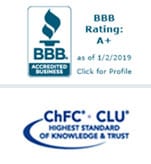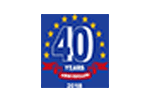
401(k) plans —for the last 40 years, these retirement accounts have been touted as a market-based replacement for traditional pensions. In reality, the transition to 401(k)s as the dominant form of employer-based retirement support is a multigenerational, and largely accidental, experiment. Originally established in 1981 as a supplement to traditional benefits programs, the first 401(k) plans were simple, limited, and designed around an obscure section of the IRS code intended to create tax shelters for corporate executives. Now, the 401(k) is the most common employer-based retirement account, and it just might be your most dangerous investment.
The 401(k) nightmare is all too real. In fact, many of us have already lived through it. Imagine: the year is 2007 and you are on the cusp of retirement. For the last forty years, you’ve dutifully invested in your company-provided 401(k) account, enough to qualify for matching contributions from your employer. By maintaining an aggressive portfolio weighted heavily toward stocks, you’ve been able to take advantage of the real estate and credit booms and accumulate a substantial nest egg.
Then, in a matter of months, it all comes crashing down.
The housing bubble—a slow-burning fuse built on predatory lending practices, sub-prime mortgages, and wild deregulation in the late 20th and early 21st centuries—pops, sending the stock market into the largest downturn since the Great Depression. Lehman Brothers goes belly-up, AIG threatens to follow suit, and the average 401(k) loses 25% of its assets. For investors with stock-heavy portfolios, that loss was even more painful. So, what happened?
Unpredictable Returns
Part of the trouble with 401(k)s stems from their basic structure. Unlike traditional pensions, which pay a set monthly benefit based on years of service, retirement age, and level of compensation before retirement, 401(k) plans automatically deposit a portion of an employee’s wages into an investment portfolio during their working years. This means that the amount of income a 401(k) owner has during retirement relies largely on the performance of their portfolio. An appropriately allocated portfolio that matured in a generally bullish market will be much larger than a portfolio that was too aggressive, too conservative, poorly diversified, or just unlucky enough to get hit with a bear during those crucial early retirement years. Essentially: 401(k)s leave you at the mercy of the market, and may saddle some investors with more risk than they can afford.
Fixed index annuities can offer security and regularity similar to that of a traditional pension. They also offer the opportunity for market returns without the risk of losing your money in a downturn.
High Fees
According to a 2016 Brightscope study, 401(k) fees have fallen slightly in recent years, down from an average of 1.02% in 2009 to 0.097% in 2014. However, 401(k)s generally charge more in administrative and other fees than IRAs, an annual cost that can eat a substantial hole in your earnings. See what your 401(k) plan is costing you here. Note: the cheapest account isn’t necessarily the best, as some higher-fee accounts justify their price tag with better management, higher-quality funds, and educational resources. But if your fees are unreasonably high, your company doesn’t offer a 401(k) match, or you’re changing jobs, it might be time to consider a rollover.
Confusing Structure
In a 2011 interview with SmartMoney.com, Ted Benna, the creator of 401(k) plans, had this to say about his invention: “I would blow up the system and restart with something different…Blowing up the existing structures is the only way we can simplify them.”
Surely, no one can accuse Benna of being an optimist.
But what is remarkable about this interview is Benna’s specific point of contention: 401(k)s are overcomplicated, and not in a good way. Not only has increased education failed to help the average account owner properly manage their assets, Benna argues, but the overwhelming amount of information creates an environment of both over- and under-management, where investors end up running their portfolios into the ground. While automatic enrollment and progressive contributions (contributions that increase by a certain percent each year) have helped, both plan additions carry their own drawbacks. This is why it’s important to consult with a financial professional who can help you sift through the jargon and set up a financial plan that meets your specific needs.
Set It and Forget It?
As with any investment, approaching your 401(k) with a “set it and forget it” mentality can wreak havoc on your financial health. This is because your risk tolerance goes down as you grow older. 401(k)s that have been set on autopilot for several years may favor funds that carry too much risk, have declined in value, or that are poorly diversified, making you vulnerable to excessive loss if the market turns volatile or implodes.


Sara McKinney
saractag@gmail.com
Sara is a recent graduate of Kalamazoo College and a new addition to the Cowen Team. Her responsibilities include IT support, event planning, and general administrative assistance.




